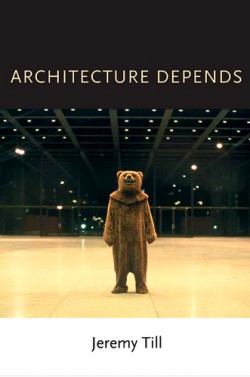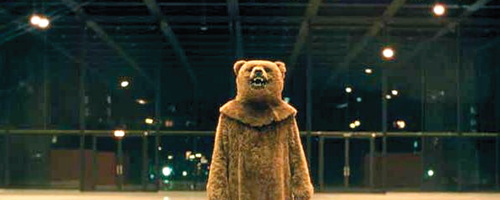“The problem with architecture school is that people go in as humans and come out as architects,” said Jeremy Till, dean of the School of Architecture and the Built Environment of the University of Westminster, London, UK.
Architecture with a capital A
“The problem with architecture school is that people go in as humans and come out as architects,” said Jeremy Till, dean of the School of Architecture and the Built Environment of the University of Westminster, London, UK.

Till will be giving a lecture at Portland State Thursday as part of the Firsts series, presented by the PSU Department of Architecture.
“I’m kicking off the lecture with a series of little videos I’ve made,” Till said. “They’re of what people did in their first year of architecture school and the way that has hardwired them in a certain manner, with rituals and values which are very difficult to throw off.”
Till believes that the first year of architecture school is unnecessarily indoctrinating, and that the patterns that students learn early in school endanger their creativity.
“The classic view of architecture is the ‘star architect’,” Till explained. “But the star architect only exists in a very tiny part in the whole profession.”
But this view, however unrealistic, influences many architecture students. So, by the time they graduate, they have a very abstract view of how the world really works and are hardly prepared deal with such architectural concepts as mass housing or hospitals.
Till published a book in 2009 titled Architecture Depends. As the name suggests, it focuses on the many things architecture depends on, including factors the profession often overlooks, like economics and climate change.
Architects do everything in their power to deny their dependence on these external factors, according to Till.
“As soon as they accept that dependency, it threatens their professional autonomy and their professional status,” he said. “So they deny all these other things going on in the world and create architecture as an idealized, perfected object.”
Till argues that architects must learn to work in a different manner.
Sarah Wigglesworth, Till’s life partner, will be giving a lecture in the Firsts series the next day. She believes that architecture is at a crisis point: “It’s a crisis of confidence, about our contact with the public and an increasing set of issues around our relevance to society,” she said. “A mirror that gets us to think about some of our internal issues and confront them is necessary; it’s necessary for architects to adjust what they do in the face of this crisis.”
Till purposefully didn’t include pictures of buildings in Architecture Depends because he felt they would distract from the book’s message, which is that the importance of buildings lies in how they are used.
“People get annoyed when I do this, but I try not to talk about the way buildings look because, as soon as you start talking about that, then you start talking about style and taste,” Till said. “Everyone’s got different opinions on that, and I was trying to make the argument that the way buildings look is a distraction from the way the buildings are used.”
During his career, Till has been a practicing architect, a researcher, a teacher and an academic administrator.
“I think the way that architecture shapes people’s lives is extraordinary,” Till said. “Out of all the disciplines it has the most profound effect on the way that people play out their lives, so if it’s treated in a responsible manner, it’s very empowering.”
To say the least, both Till and Wigglesworth view architecture differently from the way most people view the profession.
“It’s often regarded that real buildings don’t contain ideas and are simply mirrors of their client’s desires. The architecture is just the sugar coating on somebody’s financial requirements or spatial requirements,” Wigglesworth said. “I think architecture is much more than that, and it’s important to point out that everything we do has a cultural context and has a meaning.”
Till believes that architecture should be part of our social and political discourse.
“It should be something which everyone can engage in, something in which people who use buildings and inhabit them should have as big a say as architects,” Till said. “And that’s very different from how architecture is often presented, which is this set of beautiful, shiny, refined objects.”
Till hopes the students who attend his lecture will “think about what they’re doing in a slightly different manner and see other possibilities about how they’d use their architectural intelligence and their architectural ingenuity.”
“There’s other ways beyond the fixation of architecture with a capital A,” he said.
Firsts: Jeremy Till
Thursday, April 197 p.m.
Shattuck Hall Annex
Free and open to the public





